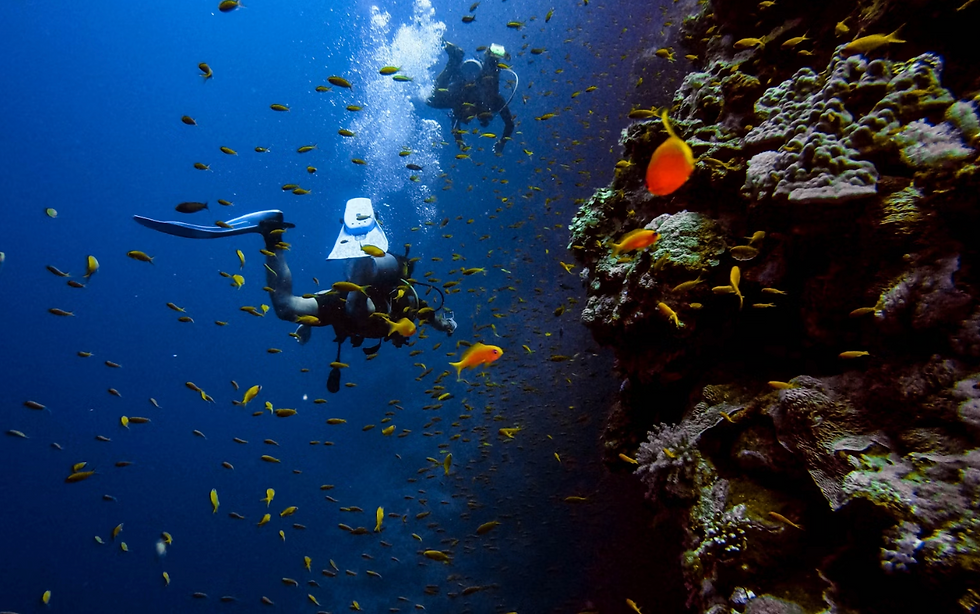Bleeding Horseshoe Crabs: the ‘Living Fossils’ that Fuel the Biomedical Industry
- Ava Sheedy
- Aug 3, 2024
- 4 min read
Updated: Feb 27
Ava Sheedy

If you are a Massachusetts beachgoer, you have likely come across the ‘living fossils’ that inhabit the region's coastlines, the Atlantic Horseshoe Crab (Limulus polyphemus). These marine arthropods have fossil relatives dating back to the Ordovician Period, 485.4 million to 443.8 million years ago, and have developed an effective immune system to help combat pathogens that enter their circulatory system. The unique qualities of horseshoe crab blood have kept the species alive for millions of years. Yet, more recently, it has also led to their demise at the hands of the biomedical industry.
Like spiders, horseshoe crabs have an open circulatory system that allows blood to move freely within their body and make direct contact with internal tissues. If gram-negative bacteria get under the organism's exoskeleton, they can easily access these tissues and cause internal damage. According to one piece, horseshoe crabs live under the constant threat of infection in a habitat that can easily contain billions of bacteria per milliliter.” (PBS) When bacterial presence is sensed by the horseshoe crab's blood cells, a rapid coagulation response occurs. The arthropod’s blood cells release granules of coagulogen, a clottable protein found in the amoebocytes that can detect invasive bacteria and immobilize it in an insoluble gel.
Horseshoe crab blood is the only known natural source of Limulus Amebocyte Lysate (LAL). For the past 30 years, LAL has been widely used to detect endotoxins in injectable drugs and medical devices such as insulin, vaccines, and intravenous devices. Any medically implanted device or injected drug that contacts human blood must be tested for gram-negative bacterial endotoxins. Horseshoe crabs were once plentiful and easy to collect, and the LAL testing only took 1 hour. However, as a result, population numbers have plummeted. Every year, the LAL industry brings in $50 million in revenue — but at what cost to the horseshoe crabs?
To obtain Limulus Amebocyte Lysate, horseshoe crabs must be collected, and their blood harvested. The bleeding process consists of a sterile needle being inserted into the tissue surrounding the animal's heart and the blood collecting in a container beneath it. Bleeding regulations in the US allow only 30% of a horseshoe crab's blood to be collected at a time and require that they be released within 72 hours, but this does not spare the organism from adverse effects. Even if horseshoe crabs are not killed as a direct result of bleeding, they can be negatively impacted in other ways.
The animals can take several months to regain their blood count after bleeding and immune functions and cuticle integrity are often altered due to reductions in hemocyanin levels. There is also evidence that after bleeding there are changes in their linear and angular velocity and their activity levels and expression of circa tidal behavioral rhythms. Combined, these effects lessen the female horseshoe crabs’ energy and make them less likely to journey into intertidal zones to spawn, contributing to the overall population decline and causing a cascading effect on the greater coastal and marine ecosystems. Every year during spawning season, female horseshoe crabs lay millions of eggs on the Massachusetts beaches. These eggs provide a food source to fish and shorebirds among other organisms making horseshoe crabs an integral part of coastal ecosystems.
So, how can we protect these organisms that play a central role on our Massachusetts shores? Professor Ding Jeak Ling at the National University of Singapore has produced a synthetic alternative to LAL called Recombinant Factor C or rFC. Several governments, including Japan and China, have approved the use of rFC in biomedical research. In the US, it is yet to be approved across the board by the FDA, but it is allowed on a case-by-case basis if there is strong evidence that the results of rFC are comparable to that of the natural horseshoe crab blood. The switch to rFC is the first step to horseshoe crab conservation from within the biomedical industry, but more must be done to prevent these ‘living fossils’ from becoming endangered.
Mass Audubon is a key advocate for horseshoe crab conservation. On March 19, the organization and its supporters helped pass a ban on the harvesting of horseshoe crabs during peak spawning season, from May to June. While the passage of this protection is a great first step, the end goal is to restore breeding grounds and horseshoe crab populations. To become a horseshoe crab advocate and aid in the horseshoe crab conservation efforts, you can join Mass Audubon's Climate & Nature Champions.
Citations
1. Anderson, R. L., Watson, W. H., & Chabot, C. C. (2013). Sub-lethal behavioral and physiological effects of the biomedical bleeding process on the American horseshoe crab,
Limulus polyphemus. The Biological Bulletin, 225(3), 137–151.
2. Botton, M., & Shin, P. (2020, June 19). International Horseshoe Crab Day: A celebration of the
flagship species for coastal habitat conservation | IUCN.
https://www.iucn.org/news/species-survival-commission/202006/international-horseshoe-
crab-day-a-celebration-flagship-species-coastal-habitat-conservation
3. Cramer, D. (2018, May 11). Inside the Biomedical Revolution to Save Horseshoe Crabs and the Shorebirds That Need Them | Audubon.
https://www.audubon.org/magazine/summer-2018/inside-biomedical-revolution-save-hor
4. Ding, J. L., & Ho, B. (2010). Endotoxin Detection – from Limulus Amebocyte Lysate to Recombinant Factor C. In X. Wang & P. J. Quinn (Eds.), Endotoxins: Structure, Function and Recognition (pp. 187–208). Springer Netherlands.
https://doi.org/10.1007/978-90-481-9078-2_9
5. Editors of Encyclopedia Britannica. (2024, May 13). Horseshoe crab | Blood & Facts |
Britannica. https://www.britannica.com/animal/horseshoe-crab
6. Fultonk. (2008, June 10). Crash: A Tale of Two Species ~ The Benefits of Blue Blood | Nature | PBS. Nature.
https://www.pbs.org/wnet/nature/crash-a-tale-of-two-species-the-benefits-of-blue-blood/5



